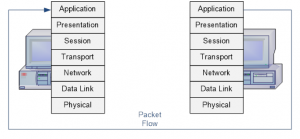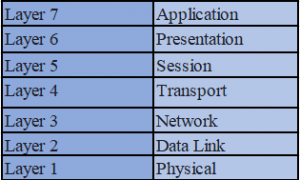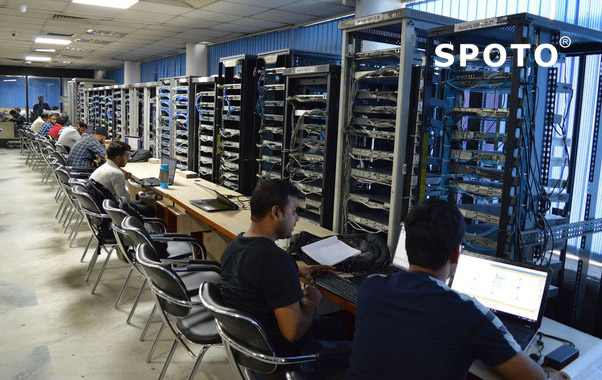| Categories | Exam Code | 100% Pass Dumps |
|---|---|---|
| CCNA | 200-301 |  |
| 200-901 DevNet |  |
|
| 200-201 Cyber Ops |  |
Top 8 Benefits of Choosing SPOTO Exam Dumps!
• 100% Real Exam Answers and Questions
• 100% Pass Guarantee
• Real Simulated Exam Environment
• Free Update for Dump Stability
• SPOTO Dumps with Highest Accuracy
• Latest Passing Report Feedback
• 7/24 Technical Support
• Professional Tutors Teams
Get 100% Real SPOTO Exam Practice Tests!
The Open System Interconnection, or the OSI reference model, is considered to be a seven-layer model that would be utilized in networking. The model specifies layer by layer how information from an application on a network device such as a computer, router, etc. would be moving from the source to the destination utilizing a physical medium, and then how it would be interacting with the software application on that specific network device.
In other words, the OSI model would be defining the network functions required for sending data and dividing them into seven categories. For acquiring more knowledge about the same, you should check out the training courses offered at the SPOTO.

The OSI Model
OSI model was developed by the ISO (International Organization for Standardization) in 1984. The OSI mechanism would be involving the following two concepts:
- The OSI reference model would have seven layers
- OSI protocols would be considered like a map to each of the seven layers
The seven layers of the OSI model, beginning from the top, are mentioned below:

The upper three layers would be concerned with application issues, like user interfacing as well as data formatting. The lower four coats would be relating to transport issues, like the data transmission and the physical characteristics of the network.
It is quite essential for understanding the OSI reference model from a design standpoint because of its modular construction. The OSI model would be dividing the specific tasks that would be involved in moving the information from one networking device for another into seven smaller, more manageable groups of functions or actions.
The overall goals of the OSI model are to enhance functionality and interoperability between different applications as well as vendors and make it easier for network administrators to focus on the design of particular layers of the model. For instance, applications could be designed without having to worry about the lower OSI layers, because, if the lower layers had already analyzed the packet, there would be a certain level of trust that the lower tiers would process and send the package over the wire successfully.
The OSI model is considered a key concept in the networking industry. It would play an essential role in the design phase of a network, utilizing a modular (layered) approach.
Protocols
A protocol is considered to be a set of rules. Network devices would be required to agree on a set of rules to communicate, and they should utilize the same protocol for understanding each other. A wide variety of network protocols would exist at different OSI layers. For instance, at the lower OSI layers, LAN, as well as WAN protocols, would be utilized, while routed and routing protocols are found at Layer 3.
Protocols could be organized in protocol stacks or suites. TCP/IP is considered to be the most common network protocol suite, named after the two contracts in the stack. The TCP/IP suite could be found in almost all modern networks, and it is believed to be the core feature for the Internet and within organizations’ networks. Other illustration of protocol suites would be the AppleTalk and Novell NetWare.
If you wish to have a more detailed overview of the OSI Model, you must check out the training courses offered at the SPOTO. SPOTO is a leading IT Exam training provider, giving you 100 percent authentic study materials and a passing guarantee.
Latest SPOTO Candidates Pass Feedback


Comments